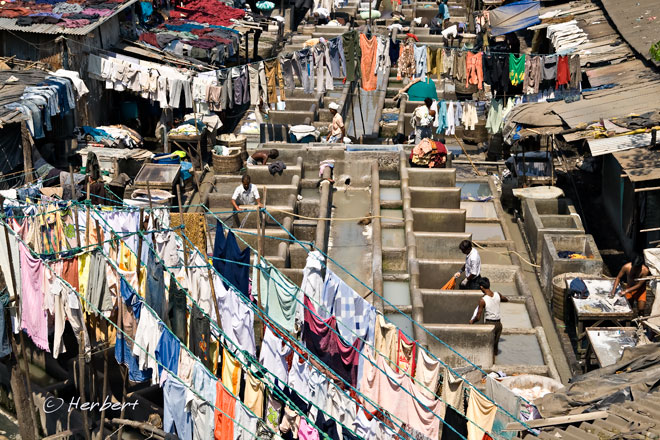
Location: Dhobi Ghat at Saat Rasta, Mumbai, India (18� 59' 0? N, 72� 48' 0? E)
Date: 11 April 2008; 1.30pm
Camera: Canon 400D with Sigma 17-70/f2.8-4.5
Dhobi- laundry- is common everywhere in India. Traditionally the laundry was washed close to a river, lake or reservoir and then spread on the banks or hang on lines to dry in the sun. This is still a common sight in many parts of India. In major cities, it is more common for the laundry to be done in "ghats� open-air concrete wash pans with flogging stones. The most famous of these Dhobi Ghats and perhaps the largest outdoor laundry is at Saat Rasta near Mahalaxmi Station in Mumbai, where around two hundred dhobis and their families work together in what has always been a hereditary occupation. The dirty garments are washed in soapy water- stubborn stains are removed by soaking them in boiling vats of caustic soda- thrashed on the flogging stones and then hung out to dry. They are pressed the next day using heavy wood-burning irons and piled into neat bundles to be returned to their owners. I am always amazed at how they can remember which garments belong to whom.
P.S. Even modern Singapore also has such ghats during the colonial times. The laundry was washed in a stream that used to be known as Sungei Bras Basah that flowed from Orchard Road to the sea (it is now the Stamford Canal). The laundry were then dried in the open space between Bras Basah Road and Stamford Road- which is why that area and the MRT station today is known as Dhoby Ghaut.